- Travels
- Alps
- Brittany
- Italy
- Greece
- new York
- Normandy
- The Netherlands
- Provence
- Paris
- All Destinations
- PAINTINGS
- Styles
- Historical
- Countries and regions
- Painters | A - C
- Painters | D - K
- Painters | H - K
- Painters | L
- Painters | M
- Painters | P -R
- Painters | S
- Painters | T - U
- Painters | V
- Painters | W - Z
- Styles
- Modern Art
- Art Nouveau
- Baroque
- Expressionism
- Impressionism
- Still lifes
- Artistic nudes
- Orientalism / Japanese prints
- Post-Impressionism
- Realism
- Renaissance
- Romanticism
- Countries and regions
- Germany
- Brittany
- UNITED STATES
- North / Grand-East
- Normandy
- Paris region
- The Netherlands
- Provence / French Riviera
- Southwest
- Painters | A - C
- Aivazovsky
- Bellows
- Beraud
- Beroud
- White
- Blonder
- Boberg
- Happiness
- Bonnard
- Botticelli
- Brandeis
- Caillebotte
- Cézanne
- Compton
- Corcos
- Čordák
- Corot
- Curran
- Painters | D - K
- Dardel
- Da Vinci
- Delacroix
- Delaunay
- Degas
- German
- Dufy
- Ensor
- Fischer
- Friedrich
- Gauguin
- Grigoriev
- Goya
- Painters | H - K
- Harunobu
- Hassam
- Hokusai
- Hopper
- Kandinsky
- Kahlo
- Kanoldt
- Kirchner
- Klimt
- Klint
- Klee
- Khnopff
- Kisling
- Kuhnert
- Kuniyoshi
- Painters | M
- Manet
- Marc
- Marcoussis
- Marquet
- Matisse
- Millet
- Moll
- Modigliani
- Mondrian
- Monet
- Morisot
- Moret
- Mucha
- Munch
Regional settings
Login
Reset your password
We will send you an email to reset your password
Sawamura Sōjūrō III in the role of Ōgishi Kurando - Toshusai Sharaku

Discover the masterful work of Toshusai Sharaku, Sawamura Sōjūrō III in the role of ōgishi Kurando, created in 1795. This emblematic play is part of a unique Japanese artistic movement, testifying to the diversity and evolution of art at that time. Sharaku, famous for his portraits of Kabuki actors, uses a daring and captivating style that redefines the conventions of his time. Thanks to his skill to play with shadows and lights, he knew how to capture the very essence of his subjects, thus conferring on each work an unrivaled depth and wealth.
Historical and artistic context
The production of Sawamura Sōjūrō III in the role of ōgishi Kurando took place at a time when Japanese art was starting to get rid of rigid traditions. Sharaku's ability to observe and interpret his contemporaries, notably the actors of Kabuki, makes him one of the pillars of Ukiyo-e aesthetics. Its innovative technique, associated with acute sensitivity for details, allowed this work to transcend time, influencing many modern artists.
Cultural impact and meaning
The popularity of this work has been immediate, provoking admiration not only of criticism, but also of the public. Today, Sawamura Sōjūrō III in the role of ōgishi Kurando is celebrated as a flagship representation of Japanese culture and continues to inspire generations of artists. The work not only evokes powerful emotions, but it is also a symbol of the artistic renewal of the 18th century.
A touch of elegance for your decoration
Integrate a Art print From this work in your interior instantly transforms the atmosphere of your home. Whether in a living room, a bedroom or an office, it brings a touch of elegance and sophistication. The timeless beauty of this work encourages reflection and admiration, making each look towards it a new aesthetic experience. By choosing to exhibit Sawamura Sōjūrō III in the role of ōgishi Kurando, you choose an art that stimulates imagination and inspires everyday life.
Conclusion
In summary, the work of Toshusai Sharaku, with Sawamura Sōjūrō III in the role of ōgishi Kurando, is much more than a simple representation; It is an immersion in Japanese history and culture. Each Art print is an invitation to celebrate art on a daily basis, bringing a unique dimension to your interior decoration. Do not miss the opportunity to add this centerpiece to your collection.
We do not keep stock and print your prints upon receipt of your order. We do this for 2 reasons:
- Offering you the best rates.
- Do not waste natural resources.
French law requires a 14-day withdrawal period. At Artem Legrand, you have 30 days to change your mind. Returns are free and we provide you with the return label.
Yes, for that, indicate the postal code of the relay point in the comment section of the order page.
Our prints are made on premium quality 140g paper on which we apply a matte lamination.
- Fabric: 100% polyester (285g/m²)
- Our special UV-resistant inks, which prevent colors from fading over time, are used for printing. Since no solvents are used, our canvas prints are perfectly safe for children and people with allergies.
- The canvases are mounted on a wooden frame 2cm thick for small formats and 4cm for very large formats (100x150cm and 120x160cm).
Sawamura Sōjūrō III in the role of Ōgishi Kurando - Toshusai Sharaku
- Unit price
- / by
€4.90 / Free delivery from €39 purchase
Free returns for 30 days
Our prints are guaranteed for 10 years
At your home in 3 to 7 business days
Prints on FSC certified papers
Prints made in France, Germany, and Italy (depending on dimensions and supports)
No chemicals, we only use vegetable inks
Already more than 10,000 satisfied customers
by email to contact@artemlegrand.com
Add a product to your cart

Discover the masterful work of Toshusai Sharaku, Sawamura Sōjūrō III in the role of ōgishi Kurando, created in 1795. This emblematic play is part of a unique Japanese artistic movement, testifying to the diversity and evolution of art at that time. Sharaku, famous for his portraits of Kabuki actors, uses a daring and captivating style that redefines the conventions of his time. Thanks to his skill to play with shadows and lights, he knew how to capture the very essence of his subjects, thus conferring on each work an unrivaled depth and wealth.
Historical and artistic context
The production of Sawamura Sōjūrō III in the role of ōgishi Kurando took place at a time when Japanese art was starting to get rid of rigid traditions. Sharaku's ability to observe and interpret his contemporaries, notably the actors of Kabuki, makes him one of the pillars of Ukiyo-e aesthetics. Its innovative technique, associated with acute sensitivity for details, allowed this work to transcend time, influencing many modern artists.
Cultural impact and meaning
The popularity of this work has been immediate, provoking admiration not only of criticism, but also of the public. Today, Sawamura Sōjūrō III in the role of ōgishi Kurando is celebrated as a flagship representation of Japanese culture and continues to inspire generations of artists. The work not only evokes powerful emotions, but it is also a symbol of the artistic renewal of the 18th century.
A touch of elegance for your decoration
Integrate a Art print From this work in your interior instantly transforms the atmosphere of your home. Whether in a living room, a bedroom or an office, it brings a touch of elegance and sophistication. The timeless beauty of this work encourages reflection and admiration, making each look towards it a new aesthetic experience. By choosing to exhibit Sawamura Sōjūrō III in the role of ōgishi Kurando, you choose an art that stimulates imagination and inspires everyday life.
Conclusion
In summary, the work of Toshusai Sharaku, with Sawamura Sōjūrō III in the role of ōgishi Kurando, is much more than a simple representation; It is an immersion in Japanese history and culture. Each Art print is an invitation to celebrate art on a daily basis, bringing a unique dimension to your interior decoration. Do not miss the opportunity to add this centerpiece to your collection.
We do not keep stock and print your prints upon receipt of your order. We do this for 2 reasons:
- Offering you the best rates.
- Do not waste natural resources.
French law requires a 14-day withdrawal period. At Artem Legrand, you have 30 days to change your mind. Returns are free and we provide you with the return label.
Yes, for that, indicate the postal code of the relay point in the comment section of the order page.
Our prints are made on premium quality 140g paper on which we apply a matte lamination.
- Fabric: 100% polyester (285g/m²)
- Our special UV-resistant inks, which prevent colors from fading over time, are used for printing. Since no solvents are used, our canvas prints are perfectly safe for children and people with allergies.
- The canvases are mounted on a wooden frame 2cm thick for small formats and 4cm for very large formats (100x150cm and 120x160cm).
You might also like
Canvas prints
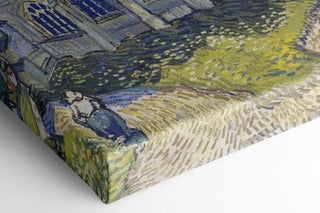
Matte Rendering
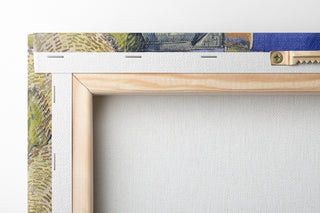
Back view
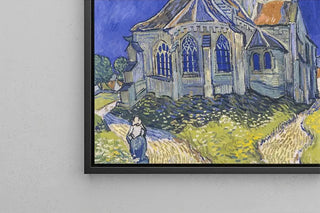
Optional frame
Prints on aluminum
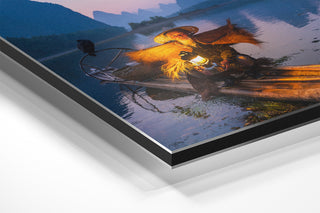
Back view
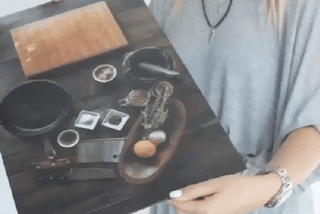
Rigid support
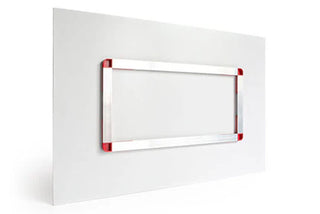
Mounting chassis (included)
How to lay out your reading?

The recommendations of Pauline, our partner decorator
Which medium to choose?
- Poster :
Ideal for vintage posters, bohemian styles, baby decorations. Excellent value for money
- Canvas :
Ideal finish for art prints of paintings
- Aluminum:
Most premium finish, perfect for photographs but also for art prints of paintings.
What dimensions?
If you hesitate between 2 sizes, choose the larger one. Indeed, when unpacking the print, you can often have the impression that you imagined the print to be bigger.






